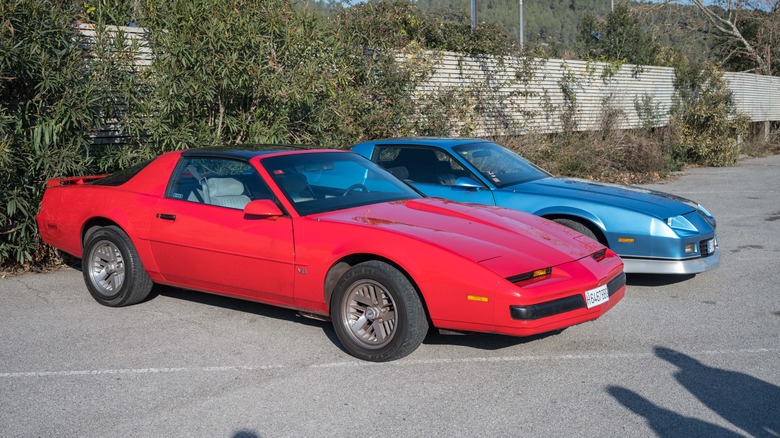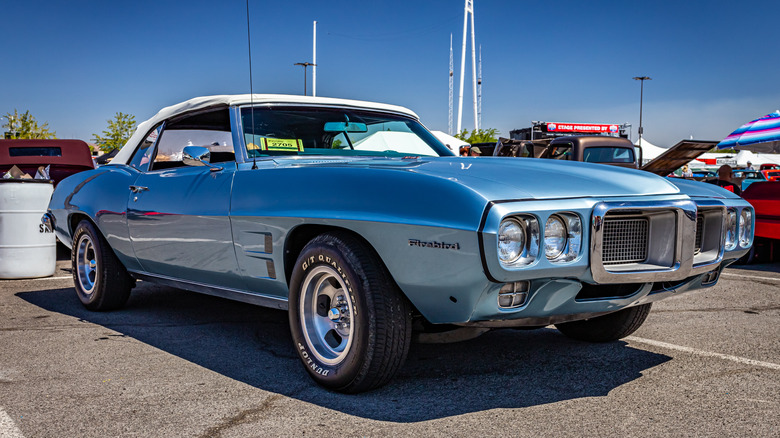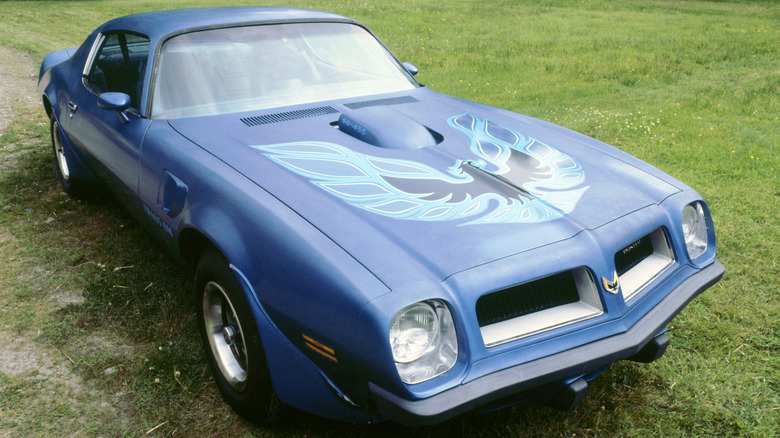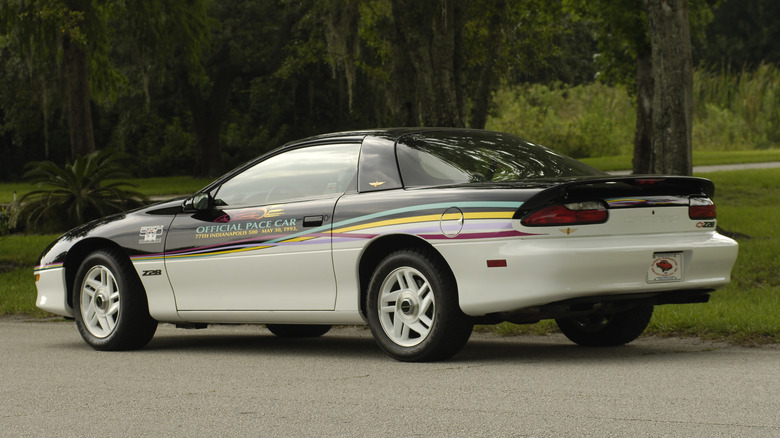Chevy Camaro Vs Pontiac Firebird: Are They The Same Car?
Since William Durant founded General Motors in 1908 to acquire Buick stock, the company has held (and given up) custody of some of the United States' oldest and most beloved auto brands. GM welcomed Chevrolet under its umbrella in 1918, and created Pontiac in 1926. Both divisions produced a healthy lineup of muscle cars during the era's heyday of the 1960s and early '70s. But while Chevy has soldiered on through economic downturns and still endures today, Pontiac was axed in 2009 after GM was forced to restructure its operations after a government bailout. Part of the reason GM gave up Pontiac was that its models had too much overlap with its other brands, particularly Chevrolet. That overlap wasn't a new phenomenon, and can be traced back to the late '60s and the structurally similar Pontiac Firebird and Chevy Camaro.
The two models hit showrooms five months apart as 1967 models, with the Camaro appearing first. They shared GM's F-body platform, and were both redesigned in 1970, 1982, and 1993. The Firebird died in 2002 at the end of its fourth generation, but the Camaro lived on through two more until Chevy announced that the sixth and current iteration of Camaro would be the last, at least for now. That decree came in a press release about a year ago, with Global Chevrolet VP Scott Bell remarking, "While we are not announcing an immediate successor today, rest assured, this is not the end of Camaro's story."
The Firebird was meant to be more upscale than the Camaro
While the Camaro could be resurrected as a muscle EV like the Ford Mustang Mach-E, which SlashGear reviewed on its release in 2021, the Firebird will stay in the scrapyard with its Pontiac siblings for now. The hope for new life isn't the only difference between the Camaro and Firebird, though.
At the time they were introduced, the Camaro and Firebird were aimed at different sectors of the car market. Chevy targeted the Camaro at people who had been buying Mustangs and other more affordable models and gave it a sticker price of a little over $2,500. At about $2,800, the Firebird was aimed a little further up the ladder at the likes of the Plymouth Barracuda and Mercury Cougar. Its interior was more refined and well-appointed than the Camaro's, but these differences were subtle.
The two models used the same glass, floors, and rocker panels and were both manufactured at GM's Norwood, Ohio factory, which was upgraded in 1981 in time to produce the second-generation F-bodies. Each model was also spun off into high-performance variants. Chevy made the Camaro SS and Z/28 (later known as Z28 with no slash), which was an option package through 1974 and its own model beginning in 1977. Pontiac had the iconic Trans Am. The base engine in the '67 Camaro was a 230 cubic inch I6, and upgrade options during the first generation included the beloved small-block 350 cubic inch V8 and its 396-inch cousin.
The Camaro and Firebird had optional large V8 engines
Early Firebird buyers also got a straight six as the base engine and V8 options in 326, 350, and 400 cubic inch displacements. The Firebird 400 was offered in three configurations, the most powerful of which produced 330 horsepower. In 1973 and '74, Pontiac produced the Firebird Trans Am Super Duty, which had a specially built 455 cubic inch V8 capable of 290 horsepower and 390 pound-feet of torque. The largest engine available in a Camaro was the 427 cubic inch V8 in racing-spec COPO models. This engine was capable of as much as 430 horsepower, but COPO Camaros weren't sanctioned to drive on public roads.
For the second generation, which ran from 1970 through 1981, the Camaro and Firebird both got more rounded bodywork. During that span, the F-body pony cars came with the buyer's choice from among 14 engines and four transmissions. The third generation debuted in 1982, bringing with it the first four-cylinder F-body engine. The biggest engine available in either model beginning that year was the 350 cubic inch V8, as American buyers became more concerned with fuel economy and insurance premiums than displacement. Even the performance-oriented Camaro IROC-Z, which appeared in 1985, was limited to a 5.0 liter (305 cubic inch) V8, but that stripped-down beast could still go from zero to 60 in under seven seconds.
The Firebird and Camaro were used as racing pace cars
Special editions of both models proliferated during the third generation, which brought 15th Anniversary versions of the Camaro and Firebird. For the fourth generation, which began in 1993, the twin F-bodies got wider and sleeker, and the four-cylinder base engine was replaced by a 204 cubic inch V6. The Camaro served as the pace car for the Indy 500 that year, and a special commemorative edition was sent to dealerships. The Firebird Trans Am got the same honors at the 1993 Daytona 500, and was released as a 1994 model.
The two F-bodies were revamped in the middle of the fourth generation in 1998, but by then the twin pony cars were limping toward their darkest hours. With sales steadily declining, GM stopped producing the Firebird and Camaro in 2002. The Camaro had always been the hotter seller, and Pontiac's discontinuation in 2009 spelled a hard end for the Firebird. The Camaro roared back to life in 2010, and could possibly have another rebirth in the coming years.



